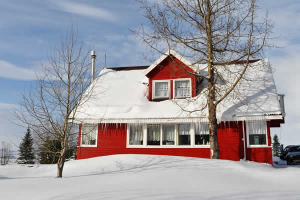
15 Mar, 2021
Imagine waking up freezing cold in the middle of a winter night. You confirm that yes, the furnace is on, and it seems to be running smoothly. However, on closer inspection, you discover you have a furnace blowing but no heat. This sounds like a nightmare situation, doesn’t it? Unfortunately, this is a common problem.
Culprit 1: The Thermostat
Problems with the thermostat are one of the most common causes of faulty heaters. Start your troubleshooting here if you suspect the thermostat is the reason for your central heat not blowing hot air.
The following scenarios could be the issue:
Culprit 2: The Filter
Another common cause of a house heater not blowing hot air is a clogged filter. If your furnace’s filter is old and clogged, it may be restricting airflow to the system. As a result, your furnace will struggle to distribute warm air efficiently. Also, some furnaces automatically shut off when this happens to prevent overheating.
Culprit 3: The High Limit Switch
A clogged filter that constantly causes overheating can result in a dead or faulty high limit switch. This can send the wrong message that the system is overheating, leading to the fan turning on at the wrong time.
Culprit 4: The Burner
Like a filter, a burner is vulnerable to dirt and debris. Clogging may prevent fuel from reaching it, which means no heat is generated, and you'll have an electric furnace blowing cold air on your hands.
Culprit 5: The Pilot Light
A pilot light is a small, continuously burning flame used to ignite the burners in older gas furnaces. These can be put out by many things, most commonly a strong burst of air.
You can probably fix your furnace not blowing hot air with a few DIY instructions, but this all depends on the problem. Here are some easy fixes for minor issues.
A replacement will be necessary if you determine your thermostat battery is the problem. Make sure to follow the manual’s instructions. If you’ve lost your owners' manual, most major-brand manuals are available on the manufacturer's website. Remember that your thermostat will revert to the default program, and you will have to program in your preferred settings.
A clogged or old filter can be easily replaced. The owner’s manual shows the location of the filter and how to remove it. Make sure you have shut off the main switch before you start. All furnaces have a standard wall switch on or near the furnace.
Dirt and debris clogging your pipes can cause a domino effect in your furnace, affecting everything from your burner to your high limit switch. Look for blocked or leaky ducts that might restrict airflow or fuel reaching the burner, remove them and soak in a mixture of bleach and water before flushing them out. Also, clean out the air intake and exhaust pipes.
If you have a leak, seal any gaps with metal duct tape—cloth duct tape deteriorates faster.
Speaking of leaks, it’s often difficult to know when you should get your furnace maintained versus when you should have your system replaced. While there are no set rules, factors such as how often your furnace breaks down and how often you have to replace leaky ducts or faulty parts can give you a general idea of when to buy a new one. Maybe your furnace not blowing warm air is just one of a host of problems.
A general rule is to look at the cost of fixing your unit versus replacing it. A new unit typically costs between $2,000 and $6,500, depending on the model and efficiency level. If your repair cost exceeds 50% of a replacement, you should consider a new furnace.
If you find you have a heater not blowing hot air, it’s time to call your furnace repair technician when experiencing the following:
Furnace not blowing hot air? You might need to call some help. Valley Service’s professional technicians provide efficient and cost-effective products and solutions to keep your home comfortable at all times. Call us today to learn more about furnace repair in Fargo, ND.